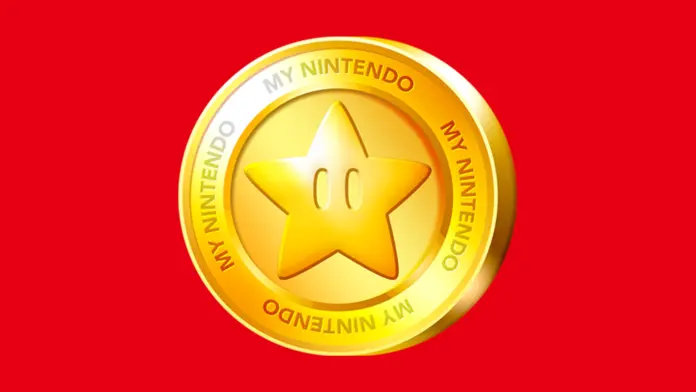As Nintendo prepares for the highly anticipated release of the Switch 2, the gaming giant is making significant changes to its rewards programs. The beloved Gold Points system, which allowed players to earn points toward future purchases, is being retired, while the popular Switch Game Voucher program is undergoing a major overhaul. For fans who relied on these perks to save money on Nintendo’s first-party titles, the news comes as a disappointment. While the company insists it remains committed to rewarding its loyal customers, the changes signal a shift in how Nintendo approaches digital incentives—and they may have broader implications for pricing strategies as the Switch 2 enters the market.
The End of an Era: Farewell to Gold Points
Since its introduction, the My Nintendo Gold Points program has been a small but appreciated way for players to save on their favorite games. By earning points through eShop purchases or verifying physical game cards, users could accumulate credits redeemable for discounts on future software. However, starting March 25, 2025, this program will no longer be available for new transactions.
According to a recent press release from Nintendo, purchases made after 9:30 PM PDT on March 24, 2025, will no longer grant Gold Points. Pre-orders placed before that date will still qualify, and physical versions of games released on or before March 24 can also earn points—but only within one year of their original release. Purchases at the Nintendo New York store are similarly exempt until the cutoff date. Any existing Gold Points already accrued will remain usable, ensuring that players won’t lose what they’ve earned so far.
While the removal of Gold Points might seem minor, it represents a notable step back in terms of consumer benefits. Though the savings were modest—typically 5% back on most purchases—it added up over time, especially for avid collectors or families investing heavily in Nintendo’s ecosystem. The decision to phase out the program suggests Nintendo is streamlining its operations ahead of the Switch 2 launch, potentially reallocating resources toward other initiatives.

A Shifting Landscape for Game Vouchers
The Switch Game Voucher program, another staple of Nintendo’s offerings, is also undergoing substantial changes. Previously, players could purchase vouchers redeemable for two full-priced digital games at a discounted rate of $100—a deal that saved buyers around $20 compared to buying those titles individually. This feature proved particularly appealing for securing first-party exclusives like Mario Kart , Zelda , or Super Smash Bros. titles without breaking the bank.
However, with the advent of the Switch 2, the utility of these vouchers is shrinking. As reported by VGC.com, the vouchers will no longer apply to games exclusive to the upcoming console. For example, if Mario Kart 9 launches solely on the Switch 2, voucher holders won’t be able to use their credits on it. Instead, the program will continue supporting titles compatible with the original Switch hardware.
This limitation raises questions about Nintendo’s pricing strategy for the Switch 2. Industry trends suggest that next-generation consoles often come with higher price tags for games, typically settling at the $70 mark seen across competitors like PlayStation and Xbox. If Nintendo follows suit, the absence of robust discount mechanisms could make purchasing habits less flexible for consumers. Without Gold Points or expanded voucher options, players may find themselves paying full price more frequently—a potential burden given the rising costs associated with gaming hardware and tariffs affecting imports.
Why Is Nintendo Making These Changes?
At first glance, phasing out Gold Points and restricting Game Vouchers seems counterintuitive, especially when fostering customer loyalty should be a priority during such a pivotal transition. Yet, several factors likely influenced Nintendo’s decision-making process.
First, the company may be positioning itself to adapt to evolving business models within the gaming industry. With subscription services like Nintendo Switch Online gaining traction, there’s speculation that Nintendo might pivot toward offering bundled content rather than individual rewards. Such a move aligns with broader trends among publishers embracing recurring revenue streams, such as live-service games or tiered memberships.
Second, logistical considerations may play a role. Managing multiple reward systems requires administrative overhead, and simplifying these processes could help Nintendo allocate resources more efficiently. Additionally, the company might view the discontinuation of Gold Points as a cost-saving measure, allowing them to invest in developing premium experiences for the Switch 2.
Finally, the timing of these changes coincides with the impending arrival of the Switch 2, signaling a strategic reset. By clearing older programs, Nintendo creates space for new initiatives tailored specifically to its next-gen audience. Whether this includes revamped rewards or entirely novel features remains to be seen.
What Does This Mean for Players?
For casual gamers, the impact of losing Gold Points and restricted Game Vouchers might feel negligible. After all, the savings offered by these programs were relatively modest. But for dedicated fans who regularly purchased first-party titles, the loss of these incentives adds up over time. It’s not just about the monetary value; it’s about the sense of engagement and appreciation fostered by earning rewards.
Moreover, the inability to use Game Vouchers on Switch 2 exclusives underscores a growing divide between the original Switch and its successor. Players hoping to bridge both generations seamlessly may face challenges as Nintendo increasingly focuses on driving adoption of the new console. With rumors swirling about increased game prices for the Switch 2, affordability concerns loom large for budget-conscious consumers.
That said, Nintendo hasn’t entirely abandoned its commitment to rewarding players. Platinum Points, part of the broader My Nintendo Rewards program, will remain intact. While not directly tied to game purchases, Platinum Points offer alternative perks like discounts on merchandise, sweepstakes entries, and access to exclusive content. Though not a perfect substitute for Gold Points, they provide some continuity for those invested in the ecosystem.
Looking Ahead: Will Nintendo Revisit Its Rewards Strategy?
Given the backlash surrounding these changes, it’s possible Nintendo will revisit its approach in the future. A revamped Game Voucher system—perhaps priced slightly higher but applicable to Switch 2 titles—could strike a balance between profitability and player satisfaction. Alternatively, introducing tiered membership tiers akin to Xbox Game Pass or PlayStation Plus could address concerns about accessibility while generating steady revenue.
Until then, players must adjust to a landscape where saving money on Nintendo games becomes incrementally harder. As the Switch 2 era dawns, one thing is clear: Nintendo is charting a bold new course, even if it means leaving cherished traditions behind. Whether these moves ultimately strengthen or strain the bond between the company and its fans depends largely on how well Nintendo balances innovation with inclusivity moving forward.
In the meantime, savvy shoppers might want to take advantage of current promotions before the March 25 deadline. Stockpiling Gold Points now or redeeming unused vouchers could soften the blow of these impending changes. For everyone else, patience—and perhaps a bit of hope—will be key as we await what Nintendo has planned for its next chapter.
















Add Comment